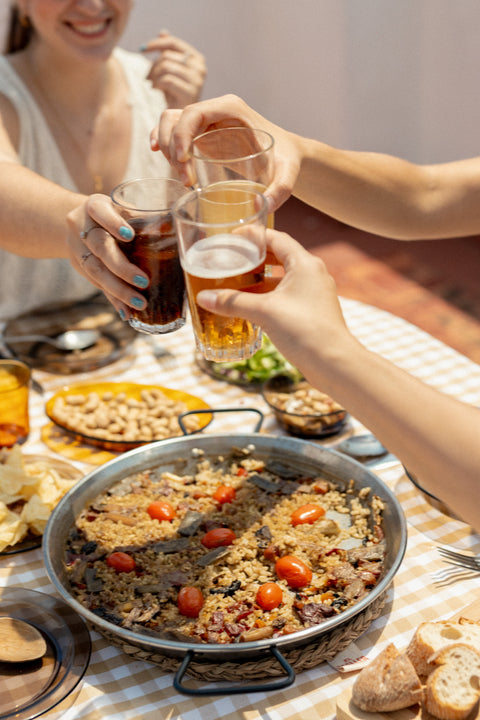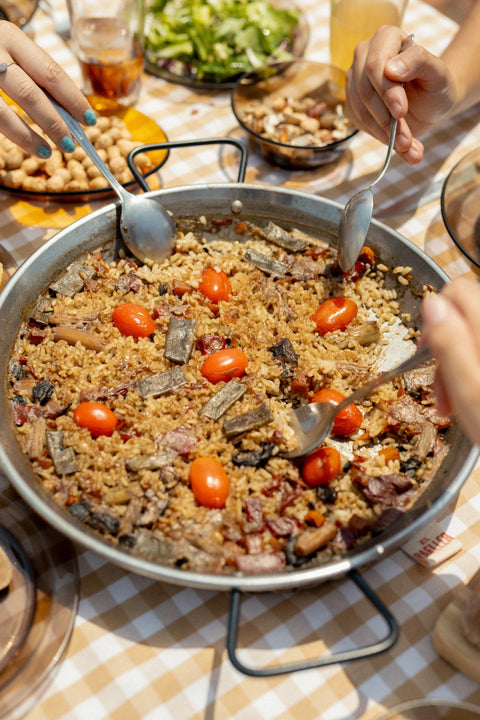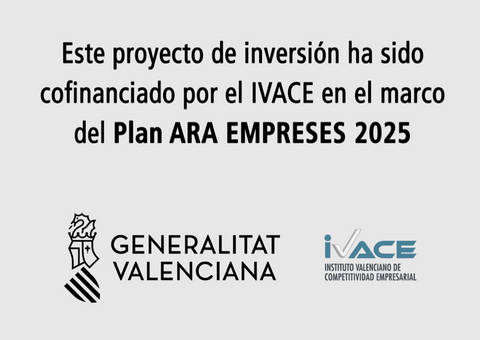We won't dwell on the fact that an authentic wood-fired paella can be enjoyed any day and anywhere. However, we are aware that traditionally, paella is a dish that, due to its preparation time, has been reserved for special occasions.
Because enjoying paella is so much more than just eating it. It's the time before, during, and after. For someone born in Valencia, paella is reliving their childhood, remembering those who are no longer with us. For others, paella might mean days of rest and relaxation at the beach. The sound of the sea.
Wherever you're from, it's clear that paella can be an unforgettable experience. But where does the true paella ritual begin and end? There are many theories, and today, we present ours.
Before even putting the pan on the heat, there are many symbols and steps that form part of the ritual. Small pleasures that revolve around the traditional preparation of paella. We have them so ingrained that sometimes we don't even notice them, which is why we need to learn to appreciate them.
Before lighting the fire.
The paella ritual begins long before you start cooking.
For many, it already begins the moment we meet up with our friends - it can be spontaneous or arranged in advance through messages with the paella emoji - and he comboi that is generated around it.
Clarification: comboi It's a Valencian word that we could translate as the joy you feel when you think about the joy you'll get from doing it. Yes, that's how we Valencians are; we have a word to express the excitement that's still to come.
The ritual begins with the involuntary and totally unconscious assignment of the roles that each person in the group adoptsOne person cooks - although everyone will try to leave their mark on the cooking to a greater or lesser extent - and the rest take care of various tasks: going for firewood, preparing the ingredients, lighting the fire, preparing an appetizer, keeping the drinks cold, etc.
Of all these roles, the person in charge of the fire commands the greatest respect. And if it's the cook who lights and maintains the fire, they're seen as something akin to a god on Earth. In Valencia, we call them Master Paella Cook.

During the preparation.
Once the flame's intensity is controlled, the group's mental dispersion makes the sole and absolute responsibility of the person in charge of its preparation evident. However, The cook must keep the fire and the rest of the group under control..
Occasionally, someone will leave the conversation to come over and check that the paella is cooking properly and the cook is doing everything correctly. They'll probably make a comment about it—"add more heat," "it's bland," "you've added too much rice"—especially as we're nearing the end of cooking—"it needs more water," "the rice is still hard," "it smells burnt." But thankfully, they quickly rejoin the group conversation. We must also acknowledge that the comments are accurate on occasion, about 1% of the time.
Do you understand now why we say that Master Paeller is an envoy from Heaven?
Eating the paella.
Allowing the paella to rest without impatience is crucial to the final result. If necessary, we will establish a safety perimeter to prevent eager and curious onlookers from tasting it prematurely.
Eating paella is in It's an act of love and brotherhood, but if it's not done correctly it can cause friction and ignite resentment..
Always in the center of the table, placed equidistantly and accessible to all diners, the paella should be conceived as a box of trifle cheeses, where each person will eat from their portion while maintaining a boundary with their neighbors.
Those with bigger appetites will sit next to those with smaller appetites. Some people don't like garrofó beans or any other ingredient, and that's perfectly fine. Anything you don't want that's in your portion can be left in the center of the paella for others to enjoy. However, any ingredients removed from the paella pan cannot be put back in, and certainly not bones.
Ideally, we should use a spoon; with a fork, it's easier to spill the rice and more difficult to scrape the surface of the paella to get the crispy bottom (socarrat). To prevent the paella from spinning, someone in the group should hold the handle. The rest of the group should make sure their glasses are never empty. It's important to remember that leaving your spoon in the pan is very bad manners—not to mention unhygienic—and resting it on the paella means you've given up.
We must not forget congratulate the cook when the paella has turned out well.Even doing it several times throughout the meal is their engine of confidence for the next one and the next.

The endless after-dinner conversation.
If there's one thing that makes the paella ritual so special, it's that you never know when it will end. That said, after enjoying the paella, dessert is essential. Watermelon or melon are perfect partners. And a digestif to settle the meal wouldn't hurt either.
Meanwhile, someone will have taken the water-filled paella pan aside to soften the leftovers. Later, someone will wash it—not by choice, chance usually decides—but it will never be the cook. Of course not.
After several more drinks, the farewell will approach. Sometimes, the end of the ritual can mark the beginning of the next. There's a reason they say that when one cycle ends, another begins. When do we do it again?






